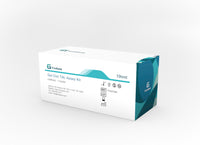
# Pyrogen Detection Kits for Pharmaceutical Quality Control
## Introduction to Pyrogen Detection
Pyrogens are fever-inducing substances that can contaminate pharmaceutical products, posing serious health risks to patients. Ensuring the absence of pyrogens is a critical aspect of pharmaceutical quality control. Pyrogen detection kits have become essential tools for pharmaceutical manufacturers to maintain product safety and comply with regulatory standards.
## Types of Pyrogens and Their Risks
Pyrogens can be classified into two main categories:
– Endogenous pyrogens: Produced within the human body (e.g., cytokines)
– Exogenous pyrogens: Introduced from external sources (e.g., bacterial endotoxins)
Bacterial endotoxins, particularly from Gram-negative bacteria, are the most common pyrogenic contaminants in pharmaceuticals. These substances can cause severe febrile reactions, septic shock, and even death in extreme cases.
## Traditional vs. Modern Pyrogen Detection Methods
Historically, the Rabbit Pyrogen Test (RPT) was the standard method for pyrogen detection. However, this method has several limitations:
– Ethical concerns regarding animal use
– Variable sensitivity among individual rabbits
– Time-consuming process
Modern pyrogen detection kits offer significant advantages:
– Higher sensitivity and specificity
– Faster results
– Reduced animal testing
– Better standardization
## Common Pyrogen Detection Kit Technologies
### 1. Limulus Amebocyte Lysate (LAL) Tests
LAL-based kits are the most widely used for endotoxin detection. They utilize blood cells from horseshoe crabs to detect bacterial endotoxins with high sensitivity.
### 2. Recombinant Factor C (rFC) Assays
Keyword: Pyrogen Detection Kits
These innovative kits use recombinant technology to detect endotoxins without relying on horseshoe crab blood, addressing sustainability concerns.
### 3. Monocyte Activation Test (MAT)
MAT kits use human blood cells to detect a broader range of pyrogens, including non-endotoxin pyrogens that LAL tests might miss.
## Benefits of Using Pyrogen Detection Kits
Pharmaceutical companies benefit from pyrogen detection kits in multiple ways:
– Improved product safety
– Regulatory compliance (meeting USP, EP, and JP requirements)
– Cost-effective quality control
– Faster time-to-market for new products
– Reduced batch rejection rates
## Implementation in Pharmaceutical Quality Control
Effective implementation of pyrogen detection kits requires:
– Proper validation according to regulatory guidelines
– Regular calibration and maintenance of equipment
– Trained personnel to perform tests and interpret results
– Integration with overall quality management systems
## Future Trends in Pyrogen Detection
The field of pyrogen detection continues to evolve with:
– Development of more sensitive and specific assays
– Increased automation for higher throughput
– Implementation of artificial intelligence for data analysis
– Greater focus on non-animal testing methods
## Conclusion
Pyrogen detection kits play a vital role in ensuring pharmaceutical product safety and quality. As technology advances, these kits continue to improve in accuracy, speed, and ethical considerations. Pharmaceutical manufacturers must stay informed about the latest developments in pyrogen detection to maintain compliance and protect patient health.
0 thoughts on “Pyrogen Detection Kits for Pharmaceutical Quality Control”